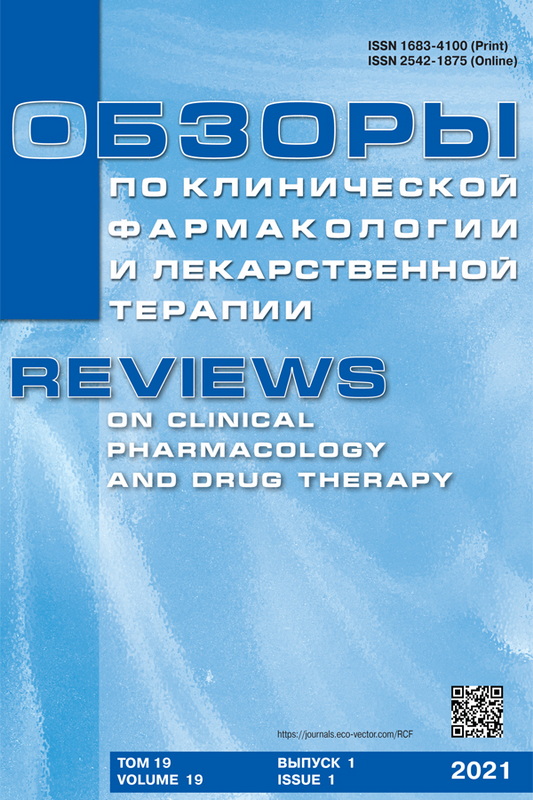Antistress action of Fornicium uniflorum extract in chronic stress
- Authors: Gulyaev S.M.1, Shantanova L.N.1
-
Affiliations:
- Institute of General and Experimental Biology SB RAS
- Issue: Vol 19, No 1 (2021)
- Pages: 97-102
- Section: Short communications
- Submitted: 14.05.2021
- Accepted: 14.05.2021
- Published: 21.05.2021
- URL: https://journals.eco-vector.com/RCF/article/view/70650
- DOI: https://doi.org/10.17816/RCF19197-102
- ID: 70650
Cite item
Abstract
The anti-stress effect of the Fornicium uniflorum extract was studied in Wistar rats in model of chronic unpredictable stress. Stress disorders in rats were determined using methods open field, plus elevated maze, forced swimming test, tail suspension model, sucrose test, as well as changes in the weight indicators of stress target organs. The course administration of F. uniflorum extract to rats under conditions of chronic stress prevented the development of behavioral disorders: the indicators of horizontal, vertical motor activities and mink reflex in the open field were, respectively, 1.5, 4 and 2.5 times higher than those of control rats (without treatment) (p < 0.05); the time spent in the open arms of the plus elevated maze and the number of entries into them were respectively 3 and 8.5 times greater than the indices of control rats (p < 0.05); the time of immobility of rats in the forced swimming test and the model of hanging by the tail were 2 and 3 times less than in the control; the volume of consumption of sucrose solution in the sucrose test by rats was 1.4 times higher than that of control rats (p < 0.05), which indicated the antidepressant activity. In the rats treated with F. uniflorum, no changes in the relative mass of stress target organs were noted, in contrast to the control (p < 0.05). Therefore, the course administration of F. uniflorum has an anti-stress and antidepressant effect in chronic unpredictable stress.
Full Text
About the authors
Sergey M. Gulyaev
Institute of General and Experimental Biology SB RAS
Author for correspondence.
Email: s-gulyaev@inbox.ru
SPIN-code: 5084-6499
Сand. Sci. (Med.)
Russian Federation, 6 Sakhyanovoy str., Ulan-Ude, 670047Larisa N. Shantanova
Institute of General and Experimental Biology SB RAS
Email: s-gulyaev@inbox.ru
SPIN-code: 9625-0059
Dr. Sci. (Biol.)
Russian Federation, 6 Sakhyanovoy str., Ulan-Ude, 670047References
- Vasil’yev AS, Abdrashitova (Polomeyeva) NYu, Udut VV. Ecdysteroids and their biological activity. Rastitel’nye resursy. 2015;51(2):229–259. (In Russ.)
- Vetosheva VI, Volodina SO, Volodin VV. Ways of activation of the protective mechanisms of the human body with long-term stress. Izvestija Komi Nauchnogo Centra UrO RAN. 2014;3(19):65–69. (In Russ.)
- Mashkovskij M.D. Lekarstvennye sredstva. 16th ed. Moscow: Novaja volna; 2010. (In Russ.)
- Muruev BA, Guljaev SM, Shantanova LN, Mondodoev AG. Antistress and antidepressant activity of a plant drug in a mild chronic stress model. Reviews on Clinical Pharmacology and Drug Therapy. 2018;16(2):69–73. (In Russ.) doi: 10.17816/RCF16269-73.
- Nikolayeva GG, Shantanova LN, Nikolayeva IG, et al. Rhaponticum uniflorum (L.) and Serratula centauroides (L.) are promising ecdysteroid-containing plants. Byulleten’ VSNTS SO RAMN. 2014;3(97):93–96. (In Russ.)
- Rastitel’nye resursy Rossii: Dikorastushhie cvetkovye rastenija, ih komponentnyj sostav i biologicheskaja aktivnost’. T. 3. Semejstva Phabaceae – Apiaceae. Budantsev A. ed. Saint Petersburg: Tovarishhestvo Nauchnyh Izdanij KMK; 2010. 602 p. (In Russ.)
- Khabriyev RU, editor. Guidelines for the experimental study of new pharmacological substances. Moscow: Medicine; 2005. 832 p. (In Russ.)
- Sergienko VI, Bondareva IB. Matematicheskaja statistika v klinicheskih issledovanijah. Moscow: GEOTAR-Media; 2006. (In Russ.)
- Tatarinova NK. Adaptogennye svojstva jekstraktov Fornicium uniflorum L. [dissertation abstract]. Ulan Udje; 2017. 20 p. (In Russ.)
- Cox BM, Alsawah F, McNeill PC. Neurochemical, hormonal, and behavioral effects of chronic unpredictable stress in the rat. Behavioural Brain Research. 2011;220(1):106–111. doi: 10.1016/j.bbr.2011.01.038
- Kokoska L, Janovska D. Chemistry and pharmacology of Rhaponticum carthamoides: A review. Phytochemistry. 2009;70(7): 842–855. doi: 10.1016/j.phytochem.2009.04.008
- Papp M, Willner P, Muscat R. An animal model of anhedonia: attenuation of sucrose consumption and place preference conditioning by chronic unpredictable mild stress. Psychopharmacology. 1991;104(2):255–259. doi: 10.1007/BF02244188
- Porsolt RD, Anton G, Blavet N. Behavioural despair in rats: a new model sensitive to antidepressant treatments. Europ J Pharmacol. 1978;47(4):379–391. doi: 10.1016/0014-2999(78)90118-8
- Ramazanov NSh. Phytoecdysteroids and other biological active compounds from plants of the genus Ajuga. Chemistry of Natural Compounds. 2005;41(4):361–369. doi: 10.1007/s10600-005-0153-4
- Wu J, Gao L, Shang L. et al. Ecdysterones from Rhaponticum carthamoides (Willd.) Iljin reduce hippocampal excitotoxic cell loss and upregulate mTOR signaling in rats. Fitoterapia. 2017;119: 158–167. doi: 10.1016/j.fitote.2017.03.015








